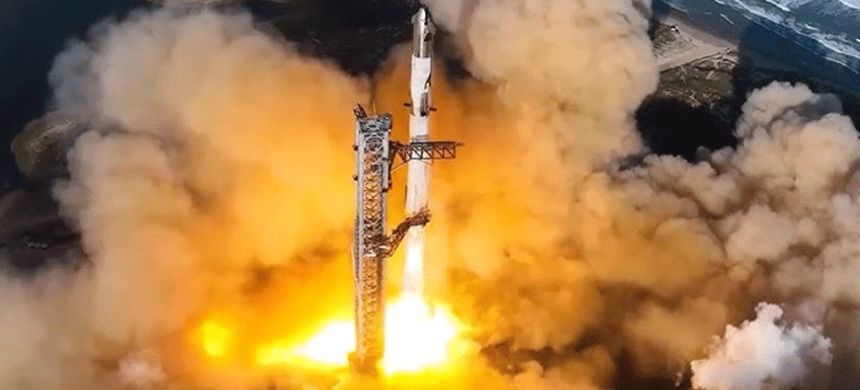SpaceX’s ninth test flight of its massive Starship rocket ended in failure on Wednesday, as the uncrewed vehicle lost control and disintegrated about 30 minutes after launch, according to U.S. media reports.
The rocket, built by Elon Musk’s aerospace company SpaceX, lifted off from the firm’s Boca Chica, Texas, facility. Reuters reported that a fuel leak occurred in orbit, causing the rocket to spin uncontrollably before it re-entered Earth’s atmosphere and broke apart prematurely.
Read more: SpaceX launches satellite SATRIA-1
SpaceX later confirmed on social media that the rocket underwent a “rapid unscheduled disassembly”—the company’s terminology for an unexpected breakup or explosion during flight.
“With tests like these, progress comes through learning,” SpaceX stated. “Today’s mission will help us enhance Starship’s reliability in our pursuit to make life multiplanetary.”
Before the failure, the 123-meter rocket had reached a higher altitude than in previous attempts, showing incremental progress in SpaceX’s goal of making Starship a reusable system for missions to the Moon and Mars.
This launch marked Starship’s ninth integrated test with its Super Heavy booster. Of the past eight flights, four ended in destruction. The last failed attempt occurred on March 6, when the rocket exploded soon after takeoff.
SpaceX employs a “fail fast, learn fast” approach—an aggressive testing strategy that aligns with Musk’s long-term vision to colonize Mars. However, the frequent failures have raised safety and environmental concerns, especially after debris from test flights has been found across the southern U.S. and the Caribbean.
Following Wednesday’s mishap, the U.S. Federal Aviation Administration (FAA) confirmed it diverted commercial air traffic and temporarily halted departures at four Florida airports, including Miami International, due to falling debris.
The FAA had expanded the airspace closure for this launch to 1,600 nautical miles (2,963 km) east of Texas and worked in coordination with aviation authorities in the UK, Mexico, Cuba, the Bahamas, and the Turks and Caicos.
Despite ongoing risks, the FAA recently increased SpaceX’s permitted annual launches from five to 25, determining the environmental impact would remain minimal—despite pushback from environmental groups.
SpaceX’s deepening ties with the U.S. government have also sparked scrutiny. In March, the Campaign Legal Center filed an ethics complaint calling for an investigation into whether the FAA’s relationship with Musk’s Starlink business posed any conflicts of interest.
Musk, who has grown more politically active and voiced support for Donald Trump, insists his focus remains on curbing “hundreds of millions in federal fraud and abuse.”
SpaceX also continues to collaborate with NASA on future Artemis missions to the Moon. If successful, Starship could become the most powerful rocket system ever, capable of delivering more payload to orbit than any existing launch vehicle.











